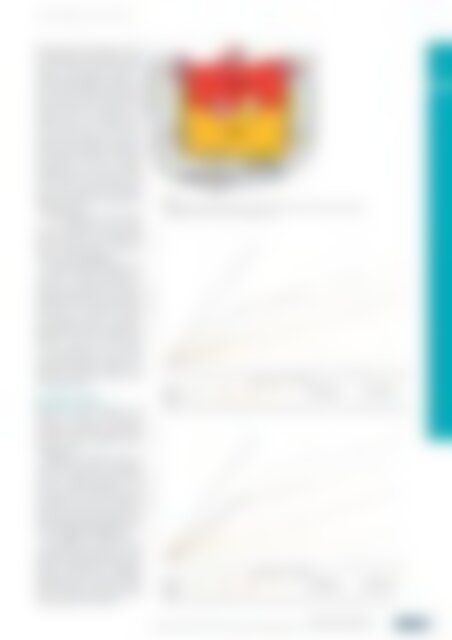atw - International Journal for Nuclear Power | 10.2020
Description Ever since its first issue in 1956, the atw – International Journal for Nuclear Power has been a publisher of specialist articles, background reports, interviews and news about developments and trends from all important sectors of nuclear energy, nuclear technology and the energy industry. Internationally current and competent, the professional journal atw is a valuable source of information. www.nucmag.com
Description
Ever since its first issue in 1956, the atw – International Journal for Nuclear Power has been a publisher of specialist articles, background reports, interviews and news about developments and trends from all important sectors of nuclear energy, nuclear technology and the energy industry. Internationally current and competent, the professional journal atw is a valuable source of information.
www.nucmag.com
Create successful ePaper yourself
Turn your PDF publications into a flip-book with our unique Google optimized e-Paper software.
<strong>atw</strong> Vol. 65 (2020) | Issue 10 ı October<br />
between melt and concrete. In this<br />
investigation a decomposition temperature<br />
of 1523 K is assumed, whereby<br />
ongoing investigations suggest a<br />
value of approx. 1800 K [FOI19]. The<br />
HTC must be defined <strong>for</strong> each layer<br />
upwards, to the side, and downwards.<br />
Also, between the two layers, a heat<br />
transfer must be determined. In<br />
metallic layers, HTC is always higher<br />
than in oxide layers. This can be<br />
explained by the higher conductivity<br />
of the metal compared to oxides. The<br />
first approach is that the coefficient<br />
determines the total heat, without<br />
individual effects, such as the crusting<br />
of the melt or the mixing of the<br />
melt by the released gas. A different<br />
approach would be to calculate these<br />
effects separately.<br />
The investigations here only relate<br />
to the experiments with silicate<br />
concrete, which are the experiments<br />
of the series V1.x, V2.x and V5.x. The<br />
values recommended by GRS <strong>for</strong><br />
HEFF are shown in Figure 2.<br />
The first simulations are per<strong>for</strong>med<br />
with these values <strong>for</strong> HEFF. In a<br />
second set of simulations, HEFF is<br />
adjusted separately <strong>for</strong> each experiment<br />
using a parameter variation and<br />
adjusted to the measured erosion.<br />
The parameters that best represent<br />
the measured erosion are shown in<br />
Figure 5 and will be evaluated and<br />
the end of this work. The results<br />
of both simulations are presented<br />
and compared in this work. Also, a<br />
possible relationship between the<br />
heat output and the effective heat<br />
coefficient is shown.<br />
| Fig. 2.<br />
Recommended values of the effective heat transfer, the decomposition enthalpy and the decomposition<br />
temperature <strong>for</strong> siliceous concrete. [SPE12] [ALS92] [ALS95]<br />
RESEARCH AND INNOVATION 511<br />
Simulation results<br />
Be<strong>for</strong>e the results adapted to the<br />
erosion are shown, it is first of all<br />
advisable to present the simulated<br />
erosion of the initial simulations. This<br />
provides a better overview over the<br />
improvements.<br />
Figure 3 and Figure 4 show the<br />
axial erosions of the experiments<br />
and their simulations with silicate<br />
concrete, without additives in the<br />
melt. As already described above, the<br />
experiments can only be compared<br />
with each other during periods of<br />
simultaneous heating. There<strong>for</strong>e, only<br />
the first 1,000 s of the experiments are<br />
shown in Figure 3 and Figure 4.<br />
The figures show the effective<br />
measured heating capacities, as the<br />
planned heating capacities could not<br />
always be achieved or maintained.<br />
Starting with V2.1 with an effective<br />
heating capacity of approx. 140 kW,<br />
the level is rising up to V1.8 with a<br />
heating capacity of 1,900 kW.<br />
| Fig. 3.<br />
Simulation results with recommended values <strong>for</strong> HEFF of the axial erosion of siliceous concrete without addition into the melt.<br />
| Fig. 4.<br />
Simulation results with adjusted values <strong>for</strong> HEFF of the axial erosion of siliceous concrete without addition into the melt.<br />
Research and Innovation<br />
Simulation of Selected BETA Tests with the Severe Accident Analysis Code COCOSYS ı Maximilian Hoffmann and Marco K. Koch

















